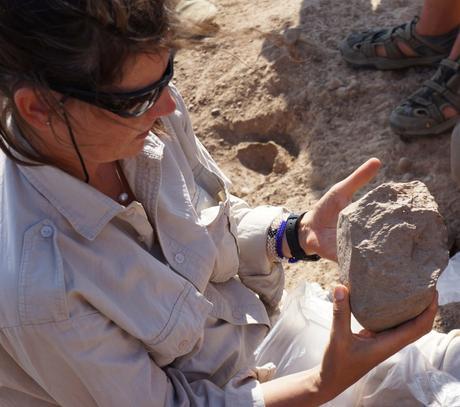 I love stories that show us that we don't know as much about our planet as we think we do. Earlier this week it was revealed that archaeologists have discovered ancient tools in Kenya that date back more than 3.3 million years. That's amazing of course, but what is even more mind blowing is the fact that these artifacts actually pre-date man, indicating that another species once inhabited the Earth that possessed the knowledge and ability to create and use tools too.
I love stories that show us that we don't know as much about our planet as we think we do. Earlier this week it was revealed that archaeologists have discovered ancient tools in Kenya that date back more than 3.3 million years. That's amazing of course, but what is even more mind blowing is the fact that these artifacts actually pre-date man, indicating that another species once inhabited the Earth that possessed the knowledge and ability to create and use tools too.This discovery turns some preconceived notions about early man on its ear. While we have seen apes and monkeys use tools to solve problems and acquire food, it has been widely assumed that one of the things that separated humans – those species designated as Homo Sapiens and Homo Erectus for instance – is our ability to make and use crude tools to our advantage. These latest findings date back to a time before and of those early humans walked the Earth, making us expand our thoughts on what other species were capable of, and change some theories as to why Homo Sapiens grew to be the dominant species on the planet.
Until now, the oldest stone tools found have dated back about 2.6 million years. Those artifacts were also found in Kenya, and included axes made out of volcanic stone that were used for hunting. But this new find predates those instruments by as much as 700,000 years.
Just who made these tools remains a bit of a mystery. There are some researchers who believe that they were made by an as-yet unknown species that we haven't discovered yet. Others are attributing them to a species early man known as Kenyanthropus. Back in 1999, a skull belonging to this species was discovered not far from the site where these tools were uncovered. It too dated back 3.3 million years.
The Live Science article that I linked to above has more information about how these tools were discovered, and what the region of Kenya was like back when those who made them still lived there. The instruments were found in the badlands located in the northeast section of the country, which is now very dry and arid. That helps to preserve the artifacts found there. But when those tools were being used, it was a forested area with plenty of shrub plants, making it a good place for animals to live and graze too.
This is fascinating stuff, and I love that we're still continuing to uncover these discoveries.

